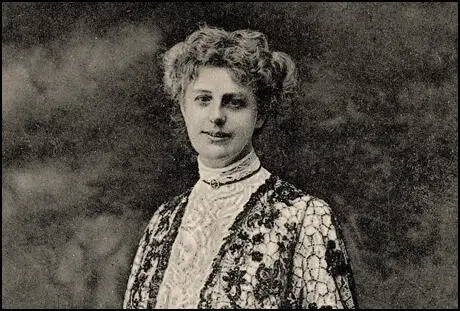On this day on 27th July
On this day in 1854 Clementina Black, the daughter of David Black, a solicitor and Maria Patten, a successful portrait painter, was born in Brighton. David Black was Brighton's Town Clerk but when Clementina was a child he became very ill and lost the use of both his legs. Educated at home, mainly by her mother, she became fluent in French and German.
In 1875 Clementina's mother died from a rupture caused by lifting her invalid husband. Clementina, the eldest daughter, was left in charge of an invalid father and seven brothers and sisters. In her spare time Clementina began writing fiction and in 1877, her first novel, A Sussex Idyll was published. After the death of her father she moved to London where she continued her career as a writer.
In 1886 Clementina became friends with Eleanor Marx, the daughter of the political philosopher, Karl Marx. As a result of their friendship Clementina became a member of the Women's Trade Union Association (WTUA). In 1886 Clementina Black was appointed honorary secretary of the organisation. For the next few years she travelled the country making speeches trying to persuade women to join trade unions. In 1888 she attended the Trade Union Congress where she moved a motion on equal pay for equal work.
Clementina Black was also involved in the formation of the Consumers' League, an organisation that tried to cajole customers to put pressure on employers who paid very low wages to women. One successful campaign involved the boycott of Bryant & May matches. This eventually led to the match-girl strike led by Annie Besant in 1888.
In 1889 Clementina Black helped form the Women's Trade Union Association (WTUA). Five years later this organisation joined forces with the Women's Industrial Council. Clementina became president of the council and for the next twenty years she was involved in collecting and publicizing information on women's work.
Her biographer, Janet E. Grenier, has pointed out: "The failure of the WTUA in 1894 led to the formation of the Women's Industrial Council (WIC), a new kind of organization which sent out its mainly middle-class women investigators to see for themselves conditions of working women, after which they wrote reports in an attempt to influence public opinion and government policy. Clementina Black became editor of its journal, the Women's Industrial News, in 1895 and later president of the WIC. She became increasingly active as a speaker and writer on problems facing women workers. She saw low pay as the root of the problem, and from 1896 began to campaign for a legal minimum wage. She was concerned with the plight of women home workers (usually widows or wives of casual labourers), especially in the tailoring trade in east and south London."
Black's solution to the problem of low pay was the establishment of wages boards that would enforce a minimum wage for certain types of unskilled workers. She wrote several books on the subject including Sweated Industry and the Minimum Wage (1907) and A Case for Trade Boards (1909).
Clementina Black was an active member of the Fabian Society. In 1906 Clementina Black was appointed as honorary secretary to the Women's Franchise Declaration Committee and was responsible for organising the petition demanding the vote that was signed by 257,000 women. In 1911 she became vice-president of the National Union of Suffrage Societies. She also held a similar role in London Society for Women's Suffrage. From 1912 to 1913 she was acting editor of The Common Cause. Janet E. Grenier has argued: "She realized that, without the vote, women had no power to legislate against poor working and social conditions. She became one of the vice-presidents of the London Society for Women's Suffrage in 1913."
By 1914 the Women's Industrial Council had investigated one hundred and seventeen trades. In 1915 Black and her fellow investigators published their book Married Women's Work. Black was also a member of the executive committee of the Anti-Sweating League and in the years preceding the start of the First World War she was involved with people such as Cicely Corbett Fisher and Hilda Martindale in organizing conferences on the subject. The organisation defined sweated labour as "(1) working long hours, (2) for low wages, (3) under insanitary conditions".
Despite her involvement in political issues, Clementina still found time to write novels until her failing eyesight made it impossible. One of the most successful of her books was The Agitator, a novel based on her experiences as a trade union leader.
Clementina Black died at her home in Brighton on 19 December 1922.
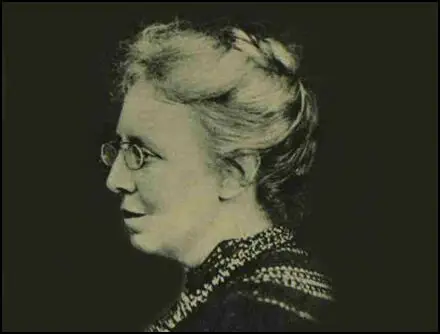
On this day in 1908 Gladice Keevil makes a speech on women's suffrage. The Leeds Mercury reported: "Miss Gladys Keevil, a young lady with a winning smile and a most becoming hat, exerted a distinct influence upon her hearers. She admitted that some of the doings of the Suffragettes had not been quite lady-like, but she pleaded that they had done nothing unwomanly."
B. M. Willmott Dobbie pointed out in A Nest of Suffragettes in Somerset (1979) that Gladice Keevil was "noted for her good looks." In August 1910 she spoke at an open-air meeting in Queen's Park, Belfast. One member of the audience commented that she was a "clever speaker and knows her subject".
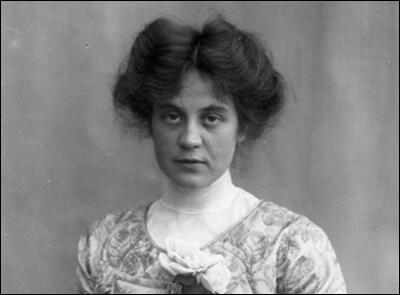
On this day in 1927 civil rights campaigner, John Seigenthaler, the oldest of eight children, was born in Nashville, Tennessee, on the 27th July, 1927. He attended Father Ryan High School and served in the U.S. Air Force after the Second World War.
In 1949 Seigenthaler was employed by The Tennessean. During this period he took courses in sociology and literature at Peabody College, Vanderbilt. He also attended the American Press Institute at Columbia University. He was a talented journalist and won the National Headliner Award for his story about Thomas C. Buntin, a wealthy Nashville business owner who had disappeared in September 1931, but was discovered by Seigenthaler living in Orange, Texas.
In July 1957, Seigenthaler began to investigate corruption within the local branch of the Teamsters. He also looked into the criminal activities of Dave Beck and Jimmy Hoffa. His articles led to the impeachment trial of Chattanooga Criminal Court Judge Ralston Schoolfield. In 1958 Seigenthaler became an assistant city editor and special assignment reporter. Seigenthaler was a supporter of John F. Kennedy in the 1960 Presidential Election and after his victory he was appointed as administrative assistant to Attorney General Robert F. Kennedy.
The civil rights group, the Congress on Racial Equality (CORE) began to organize Freedom Rides in an attempt to bring an end to segregation in transport. After three days of training in non-violent techniques, black and white volunteers sat next to each other as they travelled through the Deep South.
James Farmer, national director of CORE, and thirteen volunteers left Washington on 4th May, 1961, for Georgia, Alabama and Mississippi. Governor James Patterson commented that: "The people of Alabama are so enraged that I cannot guarantee protection for this bunch of rabble-rousers." Patterson, who had been elected with the support of the Ku Klux Klan added that integration would come to Alabama only "over my dead body."
The Freedom Riders were split between two buses. They travelled in integrated seating and visited "white only" restaurants. When they reached Anniston on 14th May the Freedom Riders were attacked by men armed with clubs, bricks, iron pipes and knives. One of the buses was fire-bombed and the mob held the doors shut, intent on burning the riders to death.
The surviving bus travelled to Birmingham, Alabama. A meeting of Student Nonviolent Coordinating Committee (SNCC) at Fisk University in Nashville, Tennessee decided to send reinforcements. This included John Lewis, James Zwerg, and eleven others including two white women. The volunteers realized their mission was extremely dangerous. Zwerg later recalled: "My faith was never so strong as during that time. I knew I was doing what I should be doing." Zwerg wrote a letter to his parents that stated that he would probably be dead by the time they received it.
During the Freedom Riders campaign the Attorney General, Robert Kennedy was phoning Jim Eastland “seven or eight or twelve times each day, about what was going to happen when they got to Mississippi and what needed to be done. That was finally decided was that there wouldn’t be any violence: as they came over the border, they’d lock them all up.” When they were arrested Kennedy issued a statement as Attorney General criticizing the activities of the Freedom Riders. Kennedy sent John Seigenthaler to negotiate with Governor James Patterson of Alabama. Harris Wofford, the president's Special Assistant for Civil Rights, later pointed out: "Seigenthaler arrived in time to escort the first group of wounded and shaken riders from the bus terminal to the airport, and flew with them to safety in New Orleans."
The Freedom Riders now traveled onto Montgomery. One of the passengers, James Zwerg, later recalled: "As we were going from Birmingham to Montgomery, we'd look out the windows and we were kind of overwhelmed with the show of force - police cars with sub-machine guns attached to the backseats, planes going overhead... We had a real entourage accompanying us. Then, as we hit the city limits, it all just disappeared. As we pulled into the bus station a squad car pulled out - a police squad car. The police later said they knew nothing about our coming, and they did not arrive until after 20 minutes of beatings had taken place. Later we discovered that the instigator of the violence was a police sergeant who took a day off and was a member of the Klan. They knew we were coming. It was a set-up."
The passangers were attacked by a large mob. They were dragged from the bus and beaten by men with baseball bats and lead piping. Taylor Branch, the author of Parting the Waters: America in the King Years, 1954-63 (1988) wrote: "One of the men grabbed Zwerg's suitcase and smashed him in the face with it. Others slugged him to the ground, and when he was dazed beyond resistance, one man pinned Zwerg's head between his knees so that the others could take turns hitting him. As they steadily knocked out his teeth, and his face and chest were streaming blood, a few adults on the perimeter put their children on their shoulders to view the carnage." Zwerg later argued: "There was noting particularly heroic in what I did. If you want to talk about heroism, consider the black man who probably saved my life. This man in coveralls, just off of work, happened to walk by as my beating was going on and said 'Stop beating that kid. If you want to beat someone, beat me.' And they did. He was still unconscious when I left the hospital. I don't know if he lived or died."
Some of the Freedom Riders, including seven women, ran for safety. The women approached an African-American taxicab driver and asked him to take them to the First Baptist Church. However, he was unwilling to violate Jim Crow restrictions by taking any white women. He agreed to take the five African-Americans, but the two white women, Susan Wilbur and Susan Hermann, were left on the curb. They were then attacked by the white mob.
John Seigenthaler, who was driving past, stopped and got the two women in his car. According to Raymond Arsenault, the author of Freedom Riders (2006): "Suddenly, two rough-looking men dressed in overalls blocked his path to the car door, demanding to know who the hell he was. Seigenthaler replied that he was a federal agent and that they had better not challenge his authority. Before he could say any more, a third man struck him in the back of the head with a pipe. Unconscious, he fell to the pavement, where he was kicked in the ribs by other members of the mob. Pushed under the rear bumper of the car, his battered and motionless body remained there until discovered by a reporter twenty-five minutes later."
Harris Wofford, the president's Special Assistant for Civil Rights, pointed out: "Seigenthaler went to the defense of a girl being beaten and was clubbed to the ground; he was kicked while he lay there unconscious for nearly half an hour. Again FBI agents present did nothing, except take notes." Robert F. Kennedy later reported: "I talked to John Seigenthaler in the hospital and said that I thought it was very helpful for the Negro vote, and that I appreciated what he had done."
In March 1962, Seigenthaler was appointed as editor of The Tennessean. He continued his campaign against Jimmy Hoffa. As a result Hoffa's lawyers attempted to move his jury tampering trial from Nashville. Seigenthaler admitted he personally wanted Hoffa convicted and the trial was moved to Chattanooga, but Hoffa was still convicted in 1964 after a 45-day trial.
Seigenthaler was given leave from his newspaper to work on Robert Kennedy's 1968 presidential campaign. Kennedy was shot by an assassin and died on 6th June, 1968. Seigenthaler serve as one of the pallbearers at his funeral, and later co-edited the book An Honorable Profession: A Tribute to Robert F. Kennedy (1993) with Pierre Salinger.
On 8th February, 1973, Seigenthaler was promoted to publisher of The Tennessean. He worked closely with Al Gore on investigative stories about Nashville City Council corruption. On 5th May, 1976, Seigenthaler dismissed Jacque Srouji, a copy editor at the newspaper, after finding that she had served as an informant for the Federal Bureau of Investigation (FBI). At the time she was writing a book critical of Karen Silkwood. Seigenthaler tried for a year to get his own FBI dossier, and finally received some highly expurgated material including these words: "Allegations of Seigenthaler having illicit relations with young girls, which information source obtained from an unnamed source."
In May 1982, Seigenthaler also became editorial director of USA Today. In 1986, Middle Tennessee State University established the John Seigenthaler Chair of Excellence in First Amendment Studies, honoring Seigenthaler's "lifelong commitment to free expression values". He resigned from most newspapers in December 1991. Later that month he founded the First Amendment Center at Vanderbilt University.
In May 2005, an anonymous user, created a Wikipedia article about Seigenthaler which claimed "was thought to have been directly involved in the Kennedy assassinations of both John, and his brother, Bobby." After investigative work by Daniel Brandt, the culprit was identified as Brian Chase, a manager at a small delivery service in Nashville.
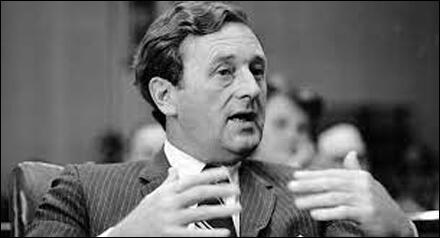
On this day in 1946 writer Gertrude Stein died.
Gertrude Stein was born in Allegheny, Pennsylvania, on 3rd February, 1874. As a child she lived in Vienna and Paris before returning to the United States to study at Radcliffe College (1893-97) and Johns Hopkins Medical School (1897-1901) but left before taking her degree.
In 1903 Stein moved to France where she lived with her lover, Alice B. Toklas. Her home became a gathering place for European artists and American writers.
Her first novel, Three Lives, was published in 1909. Its prose style is highly unconventional and virtually dispenses with normal punctuation. Tender Buttons (1914) was even more experimental and sold extremely badly. Other work by Stein include her theory of writing, Composition and Explanation (1926), The Autobiography of Alice B. Toklas (1933), two volumes of memoirs, Everybody's Autobiography (1937) and Wars I Have Seen (1945), a novel about the Second World War, Brewsie and Willie (1946) and an opera about Susan B. Anthony, the women's rights campaigner, The Mother of Us All (1946).
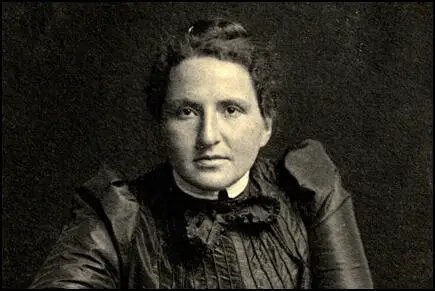
On this day in 1949 WSPU member Georgina Brackenbury died. The following year her sister, Marie Brackenbury, died. The last survivor of the immediate family, she left the house to the Over Thirties Association. The Suffragette Fellowship commissioned a plaque to be attached to the house. It read "The Brackenbury trio were so whole-hearted and helpful during all the early strenuously years of the militant suffrage movement. We remember them with honour."
Georgina Brackenbury, the daughter of Hilda Brackenbury, and the sister of Marie Brackenbury, was born in 1865. Her father, Charles Brackenbury, was an army general and two of her brothers died while serving in the armed forces.
Brackenbury studied at the Slade Art School from 1888 to 1900. A member of the National Union of Women's Suffrage Societies (NUWSS) she joined the Women's Social and Political Union (WSPU) in March 1907.
In February 1908, Georgina Brackenbury was arrested in February 1908 during a WSPU demonstration outside the House of Commons and was sentenced to six weeks in Holloway Prison.
On her release she spoke at meetings all over Britain. She also made a tour of Germany where she gave several speeches on the subject of women's suffrage. In 1909 she joined Annie Kenney, Elsie Howey, Clara Codd, Vera Wentworth, Mary Blathwayt and Mary Phillips the WSPUWest of England campaign. In 1910 she replaced Mary Gawthorpe as WSPU organizer in Manchester.
Georgina Brackenbury visited Eagle House near Batheaston on 22nd July 1910 with her sister Marie Brackenbury. Their host, was Mary Blathwayt, a fellow member of the WSPU. Her father Colonel Linley Blathwayt planted a tree, a Cupressus Macrocarpa Lutea, in her honour in his suffragette arboretum in a field adjacent to the house.
Christabel Pankhurst decided that the WSPU needed to intensify its window-breaking campaign. On 1st March, 1912, a group of suffragettes volunteered to take action in the West End of London. The Daily Graphic reported the following day: "The West End of London last night was the scene of an unexampled outrage on the part of militant suffragists.... Bands of women paraded Regent Street, Piccadilly, the Strand, Oxford Street and Bond Street, smashing windows with stones and hammers."
Georgina Brackenbury and her mother, were both arrested for taking part in the demonstration. Hilda Brackenbury, aged 79, was accused of breaking two windows in the United Service Institution in Whitehall. She served eight days on remand before being sentenced to 14 days in Holloway Prison. Georgina served four weeks in prison.
Mrs Brackenbury's home at 2 Campden Hill Square, London, became known as "Mouse Castle" as members of the WSPU went there to recuperate after being released under the Cat & Mouse Act.
In 1927 Georgina Brackenbury was commissioned by Margaret Haig Thomas to paint the portrait of Emmeline Pankhurst that now hangs in the National Portrait Gallery. According to Elizabeth Crawford, the author of The Suffragette Movement (1999): "It is thought to have been painted from life, although there is in existence a photograph (reproduced as a postcard) of Mrs Pankhurst, wearing exactly the same clothes and jewellery as appear in her portrait. However, the position of the figure differs and doubtless by then Mrs Pankhurst's finances did not allow her an extensive wardrobe."
